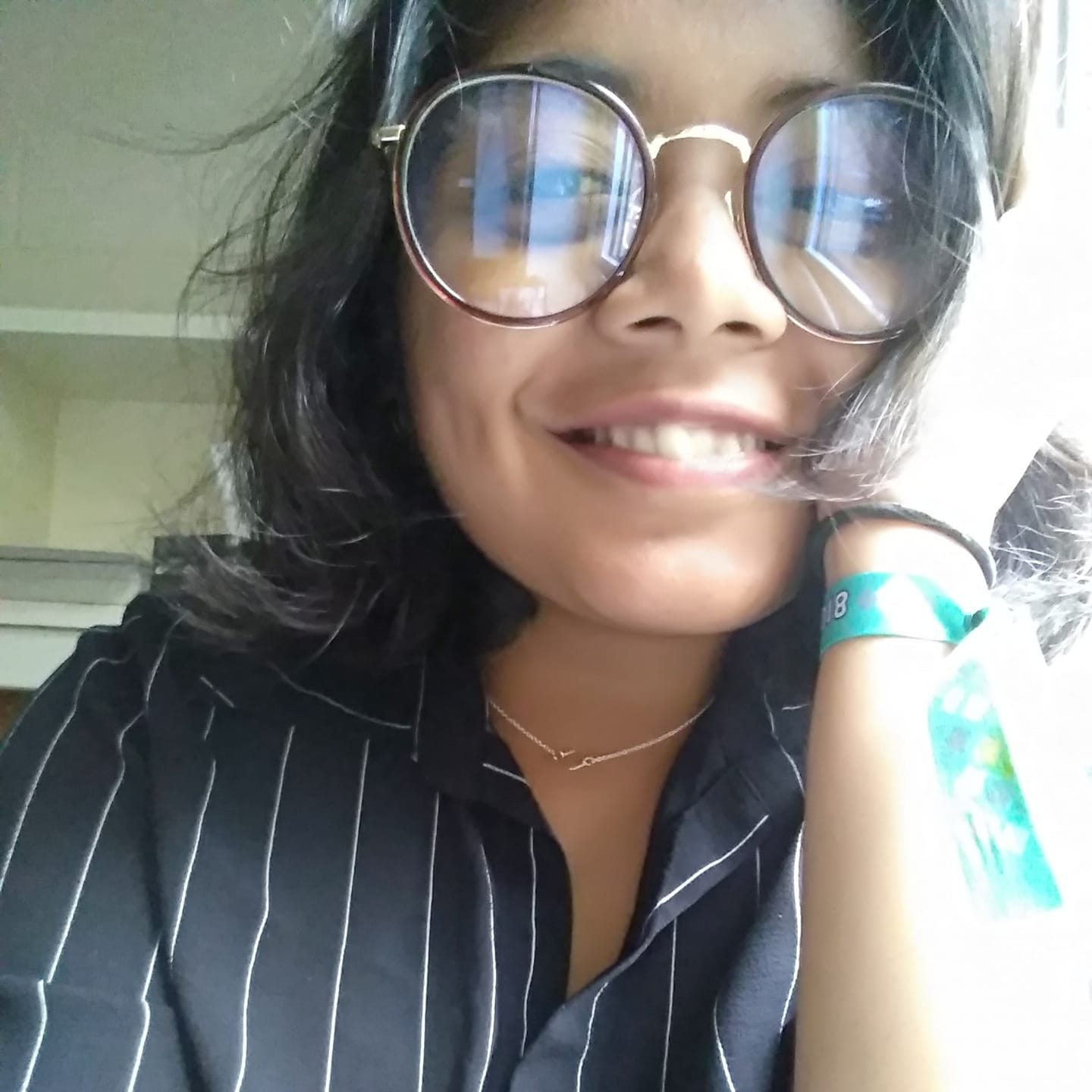Despite the significant use of social media to promote mental health awareness, some scholars and many popular sites argue that social media platforms such as Tumblr or Facebook are increasingly being used to “glorify” mental illness. In this blog, I would like to present that, asides from glorification, young people can also use these platforms in order to find a sense of identity and community through a virtual social construct.
A study published by Emily Turner in her journal, “Dissenting Voices” suggested the significant role of social media in glorifying mental illness (qtd. in Jadayal et al. 1). Glorification indicates the showcase of a particular object, person or topic in a more falsely exaggerated way. Youth have started to describe mental illnesses like depression as a “beautiful suffering” says Anne-Sophie Bine from her article, “Social Media Is Redefining ‘Depression’” (qtd. in Jadayal et al. 2). Teens consider themselves to have bipolar disorder as a result of being “moody” (Basu) and anxiety is practically a joke on the internet (Jadayel et al. 8). These trends that seem to simplify such medical issues to mere personality quirks may not only promote mental illness as a fashion statement but may also encourage young people who haven’t yet participated in such activities to pick it up as a type of coping mechanism, says Tanner. (qtd. in Jadayal et al. 2).
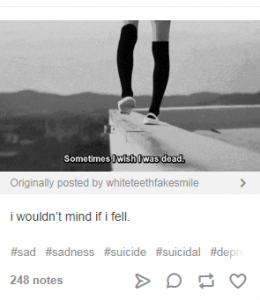
Source: Tumblr
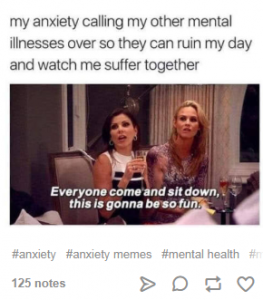
Source: Tumblr
However, on a platform as abstract as social media, it is difficult to tell who is romanticizing and who is actually suffering through mental health issues. And where it is arguable that social media imposes many threats to mental health, I would like to see it as a way of youth building their social networks and community and eventually a sense of identity. One way to do this is to be a part of a social group which is a group that members of which have something in common and believe what they have in common is significant. (“Social Groups: Crash Course Sociology #16” 00:00:55-00:01:00). In his article, “How Social Media Helps Teens Cope with Anxiety, Depression, and Self-Harm” Dr. Sameer Hinduja states that teens use social media as a medium to connect with peers or mentors who encourage and inspire them and show them that they are not alone in whatever they are going through. Through media like Tumblr, they do not just gain emotional support but also become more aware of a sociological imagination that they are not the only ones suffering. Sociological imagination is a concept suggested by C.W Mills which describes the feeling of being mutually exclusive from what could be a daily phenomenon of life. By realizing this, teenagers may become encouraged to become supporters than sufferers and this may lead to them building a social community or a social group.
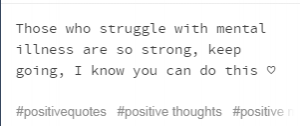
Source: Tumblr
Besides that, social media platforms like Facebook also aid to have more frequent interactions with those social groups and which leads to higher self- esteem and improved psychological well-being (Steinfield, 436). Hence, a growing self-esteem eventually aids a growing sense of identity among teenagers as not someone who is “weak-minded” or “marginalized” but rather they understand that mental illnesses are a big issue and it is okay to be a victim of it and it is okay to seek help for it.
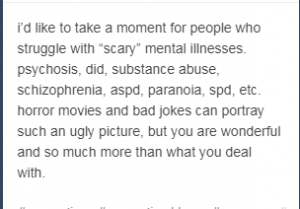
Source: Tumblr
Therefore, despite the obvious negative arguments against social media, we should shine the spotlight from a different angle and consider that such platforms may be used by the millennial as a way to build their social networks and sense of identity.

Source: Tumblr
Works Cited:
Jadayel, Rola et al. “MENTAL DISORDERS: A GLAMOROUS ATTRACTION ON SOCIAL
MEDIA?” Journal of Teaching and Education, pp. 465-475, University Publications, http://www.universitypublications.net/jte/0701/html/V7NA374.xml
Steinfield, Charles et al. “Social capital, self-esteem, and use of online social network sites:
A longitudinal analysis.” Journal of Applied Developmental Psychology, pp. 434-445, ScienceDirect, https://www.sciencedirect.com/science/article/pii/S0193397308000701
Basu, Rupkatha. “Please, Stop Glorifying Mental Illness.” Thought Catalog. 3 April 2017, https://thoughtcatalog.com/rupkatha-basu/2017/04/please-stop-glorifying-mental-illness/
“Social Groups: Crash Course Sociology #16” Youtube, uploaded by CrashCourse. 3 July 2017, https://www.youtube.com/watch?v=_wFZ5Dbj8DA&index=17&list=PL8dPuuaLjXtMJ-AfB_7J1538YKWkZAnGA
Hinduja, Sameer. “How Social Media Helps Teens Cope With Anxiety, Depression, and Self-Harm.” Media Literacy Week, Cyberbullying Research Center, https://www.medialiteracyweek.ca/2016/10/how-social-media-helps-teens-cope-with-anxiety-depression-and-self-harm/
